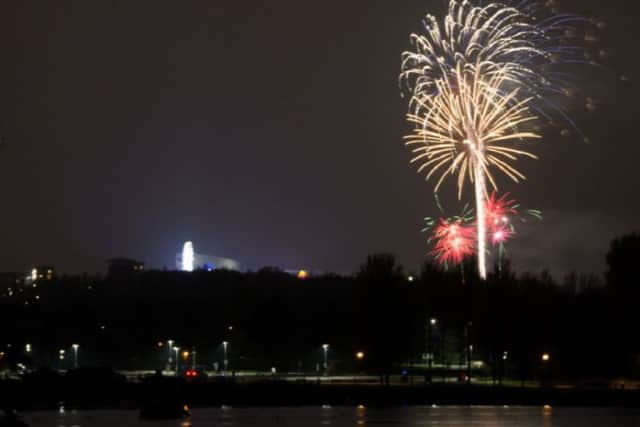Relive the spectacular 2018 Milton Keynes fireworks display
and live on Freeview channel 276
The 2018 Firework Display Keith Emmett Funfair MK at Campbell Park was free to attend and celebrating its 40th year.
Billed as the largest free firework display in Milton Keynes there was also a fun fair for all the family to enjoy.
Advertisement
Hide AdAdvertisement
Hide AdAnd a cracking evening certainly went off with a bang as these great pictures from Moe Myall demonstrate.


Watch the video slideshow at the top of this article to see pictures from the MK fireworks display 2018.
A History of Bonfire Night
“Remember remember the fifth of November.” But just why do we venture out into the cold to stand around a bonfire and set off fireworks every year? Of course, it’s all to do with Guy Fawkes who, on November 5, 1605, was arrested while guarding the explosives he and a team of accomplices had placed beneath the House of Lords. The Gunpowder Plot was intended as a murderous prologue to a Midlands revolt designed to disrupt a ceremony in which King James I’s nine-year-old daughter was to be installed as the Catholic head of state. But it failed when authorities were tipped off by an anonymous letter. In its early days, Bonfire Night was an enforced public day of thanksgiving, celebrating the fact that King James I’s life was spared by the plot’s failure. Gunpowder Treason Day was the main English state commemoration, but it wasn’t originally the cosy celebration with sparklers and hot drinks we’ve come to know today. With strong anti-Catholic overtones, violence was known to flare up, and sermons warning against the dangers of Catholicism were often preached against a backdrop of burning effigies of the Pope. Even long after the day’s origins, 19th century towns saw class-warfare erupt; it wasn’t until 1859 – when the Observance of 5th November Act was repealed – that the violence began to subside. By the 20th century, the event became more recognisable as the Bonfire Night we know today, with the setting off of fireworks a tongue-in-cheek metaphor for Guy Fawkes’ sternly guarded cargo.
READ MORE:
Advertisement
Hide AdAdvertisement
Hide Ad